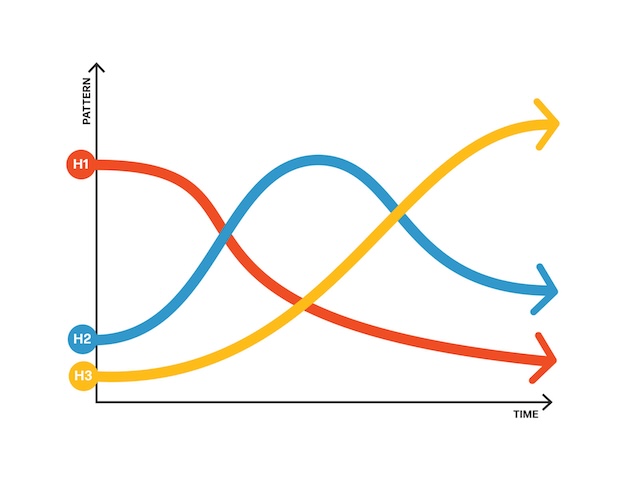In conversations about regenerative design we draw heavily on Bill Sharpe’s Three-Horizons Model because it allows us to make sense of a complex situation. In any group of people collaborating on a project it is possible to find people who are managing the decisions of the past, some who are dreaming about the future and some who are thinking about what we should do next.
This co-existence of past, present and future so beautifully showed up for me recently as a parent, watching our daughter manage the transitions of the present, dreaming about her grown-up plans for the future, and still wanting the care of a younger self.
And now I am thinking about it, I recognise these different voices, with needs and hopes, from different times, co-exist in my adult head too.
The power I see in Bill’s teaching is to recognise and welcome all three of these voices at the same time. Last week I wrote about chaos and looking for the signal in the noise. But when we can start to recognise that there are three (or more) things going when we encounter any change, we can start to make more sense of the signals we are working with.
The future, present and the past are always with us. Recognising them can help us work with them to reach design decisions that are the best next step.
The Three Horizons model is part of our Tools for Regenerative Design collection.
Explore frameworks like Three Horizons, Systems Bookcase and Living Systems Blueprint — practical ways to bring regenerative thinking into everyday design practice.

